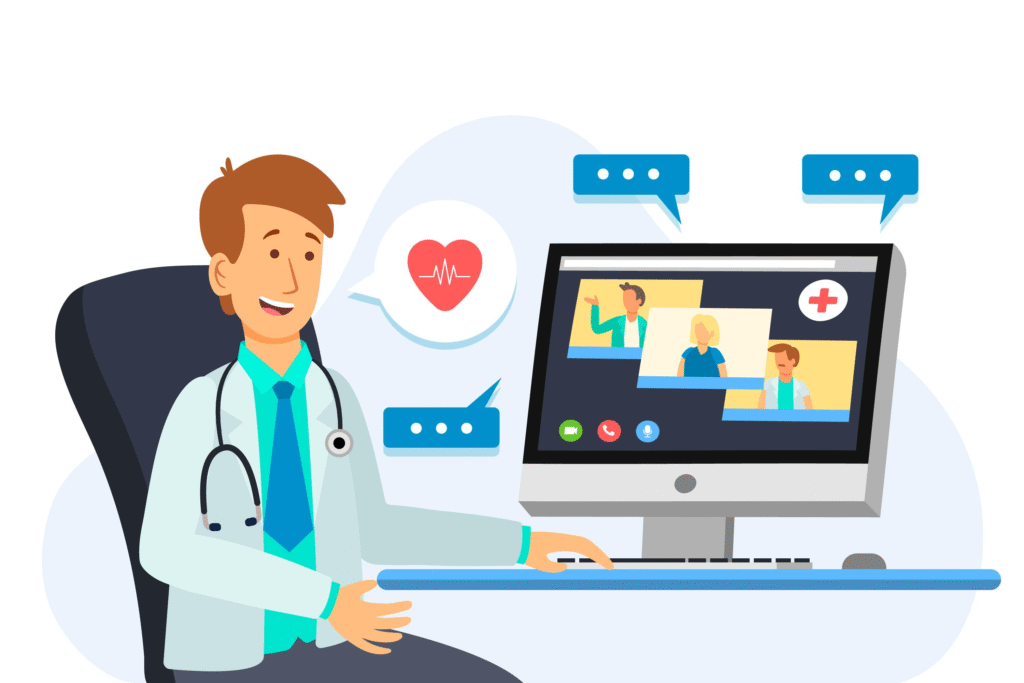
In today’s healthcare environment, clinics are under pressure to improve patient experiences while managing costs and time. One of the biggest questions being asked is whether technology can replace the role of traditional front desk staff. A virtual medical assistant is now commonly used in many healthcare practices, making scheduling, follow-ups, and communication easier and faster. But can these digital helpers truly take over the responsibilities of a human receptionist?
What Do Front Desk Staff Do in Clinics?
Front desk staff play an important role. They greet patients, manage appointments, answer phones, handle billing questions, and make patients feel comfortable. These tasks require not only organization but also empathy and communication skills.
Rise of Virtual Help in Healthcare
Technology has advanced to a point where many tasks can be done remotely or automatically. From appointment reminders to insurance verification, virtual systems are becoming more common in clinics of all sizes. Patients are also getting used to interacting with digital tools, especially after the pandemic.
What is a Virtual Assistant in a Clinic?
A virtual assistant in a healthcare setting is a person or software that helps with administrative tasks remotely. They can work from anywhere but still have access to clinic systems. They may respond to calls, book appointments, send out reminders, or even handle live chat on the clinic’s website.
Cost Savings vs. Human Presence
One of the main reasons clinics turn to virtual assistants is cost. Hiring full-time front desk staff can be expensive, especially for small practices. Virtual assistants often work part-time or on-demand, helping reduce payroll costs. However, there’s something special about having a real person greet you when you walk into a clinic.
24/7 Availability and Multitasking
A human receptionist works certain hours, but a virtual system can be available 24/7. Patients can book or cancel appointments at any time, even at night. A virtual assistant for medical practice can also handle multiple requests at once, something that’s hard for one person to do during a busy day.
Can They Handle Emergency Situations?
One concern is how well a virtual assistant can handle emergencies or special requests. A trained receptionist might know when a patient sounds unwell and act quickly. Virtual systems often follow scripts or set protocols, which may not be flexible enough for unique situations.
Patient Experience: Is It the Same?
Many patients like talking to a real person, especially when they’re feeling nervous or sick. Front desk staff can offer comfort through a smile or a kind word—something digital systems can’t do. That personal touch helps build trust between the clinic and the patient.
Language and Communication Challenges
Human receptionists can adjust how they speak depending on who they’re talking to. They can slow down for older patients or help someone who struggles with English. Virtual assistants might not understand tone, accents, or unclear requests as well, which could lead to mistakes or frustration.
Security and Privacy Concerns
Handling patient data comes with responsibility. While virtual systems are often built with security in mind, mistakes can still happen. Front desk staff are trained to protect sensitive information. Clinics need to make sure virtual tools are HIPAA-compliant and monitored regularly.
Flexibility and Task Customization
Human front desk workers can easily switch between tasks and respond to new challenges. If a doctor is running late, they can explain to patients and reschedule others. Virtual assistants work based on what they’re programmed to do, so they might miss out on the “human judgment” side of things.
Reducing Burnout, Not Replacing People
Instead of completely replacing staff, virtual assistants can be used to reduce pressure. They can take care of repetitive tasks like data entry or appointment confirmations. This lets front desk staff focus more on patient interaction and problem-solving.
Real-World Use in Small Clinics
Many small clinics already use a combination of virtual and in-person help. A virtual medical assistant might answer calls and book appointments, while a part-time receptionist handles check-ins and patient needs in the office. This kind of hybrid model can balance cost with quality service.
Adapting to New Expectations
Younger patients often prefer digital communication. They may not want to wait on hold or come in to make an appointment. Virtual assistants help clinics meet these modern expectations while freeing up time for staff to handle other priorities.
Training and Integration Is Key
Virtual systems can be helpful, but they need to be trained and updated just like human employees. Clinics must invest time in setting up the right tools and teaching staff how to use them together. This teamwork between tech and humans can lead to smoother operations.
Ethical and Employment Concerns
Replacing workers with machines raises questions about fairness and job security. Front desk roles are a common entry point for people into the healthcare field. If we replace too many of these jobs, it could limit opportunities for new workers.
What Patients Really Want
At the end of the day, patients want fast, friendly, and accurate service. Whether that comes from a person or a program depends on how well each option is set up. Most patients will be happy as long as their needs are met without confusion or delay.
Hybrid Models Are the Future
It’s unlikely that virtual assistants will fully replace front desk staff. However, they can work side by side, improving efficiency and lowering stress. This partnership allows clinics to get the best of both worlds—technology and human care.
Conclusion
While virtual medical assistants offer convenience and cost savings, they can’t fully replace the human touch that many patients value. In most clinics, a hybrid system that combines virtual support with front desk staff may work best. The future isn’t about choosing one over the other—it’s about finding a smart balance that benefits both patients and healthcare teams.



